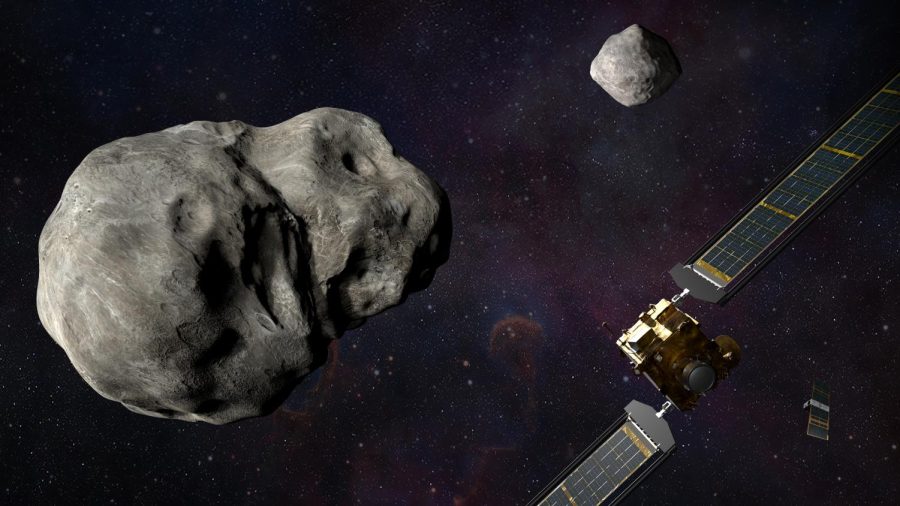NASA Knocks Asteroid out of Course
On September 26, 2022, NASA’s DART (Double Asteroid Redirection Test) mission made contact with the asteroid, Dimorphos. This remarkable achievement is the first time humanity has been able to change the motion of a celestial object.
After ten months of flying through space, DART slowly (relative to its normally high speeds) inched towards an asteroid system, Didymos and Dimorphos, two lumps of rock in the deep abyss of space. The name Didymos comes from the word “twin” in Greek, indicating the binary nature of this asteroid system.
Didymos, with a diameter of 780 meters (over eight football fields long), is significantly larger than Dimorphos, with a diameter of 160 meters (roughly two football fields long), causing Dimorphos to orbit Didymos. NASA’s goal was to change how long it takes for Dimorphos to orbit around Didymos. So, how was this done?
Well, there are several ways of going about deflecting an asteroid. One could use anything from a nuclear blast to crashing one or more spacecrafts into it. NASA went with the latter method for the DART spacecraft, using what was essentially a box with wings. Solar panels were placed on these wings, providing energy for an electric propulsion system. This allowed for a stable flow of energy until DART reached its destination.
The mission was a success! Eventually, the spacecraft crashed into Dimorphos at a speed of approximately 14,000 miles per hour, causing its orbital period to shift ever so slightly. According to NASA, Dimorphos’ original orbital period around Didymous was 11 hours and 55 minutes. After the head-on collision from the spacecraft, the period was shortened to 11 hours and 23 minutes. It might not sound like much, but if earth’s orbital period were to change by such an amount, our solar year would be about two weeks shorter.
One of NASA’s challenges in doing this was navigating DART towards Dimorphos, seeing as this was over six million miles away from Earth. But through the spacecraft’s optical navigation system, the asteroid was able to accurately hit its target. The collision was verified through NASA’s telescope sightings in September.
This system was never predicted to impact Earth. However, the DART mission has proven our ability to redirect an asteroid heading towards us, and perhaps prevent the same catastrophic event that had wiped out the dinosaurs.


